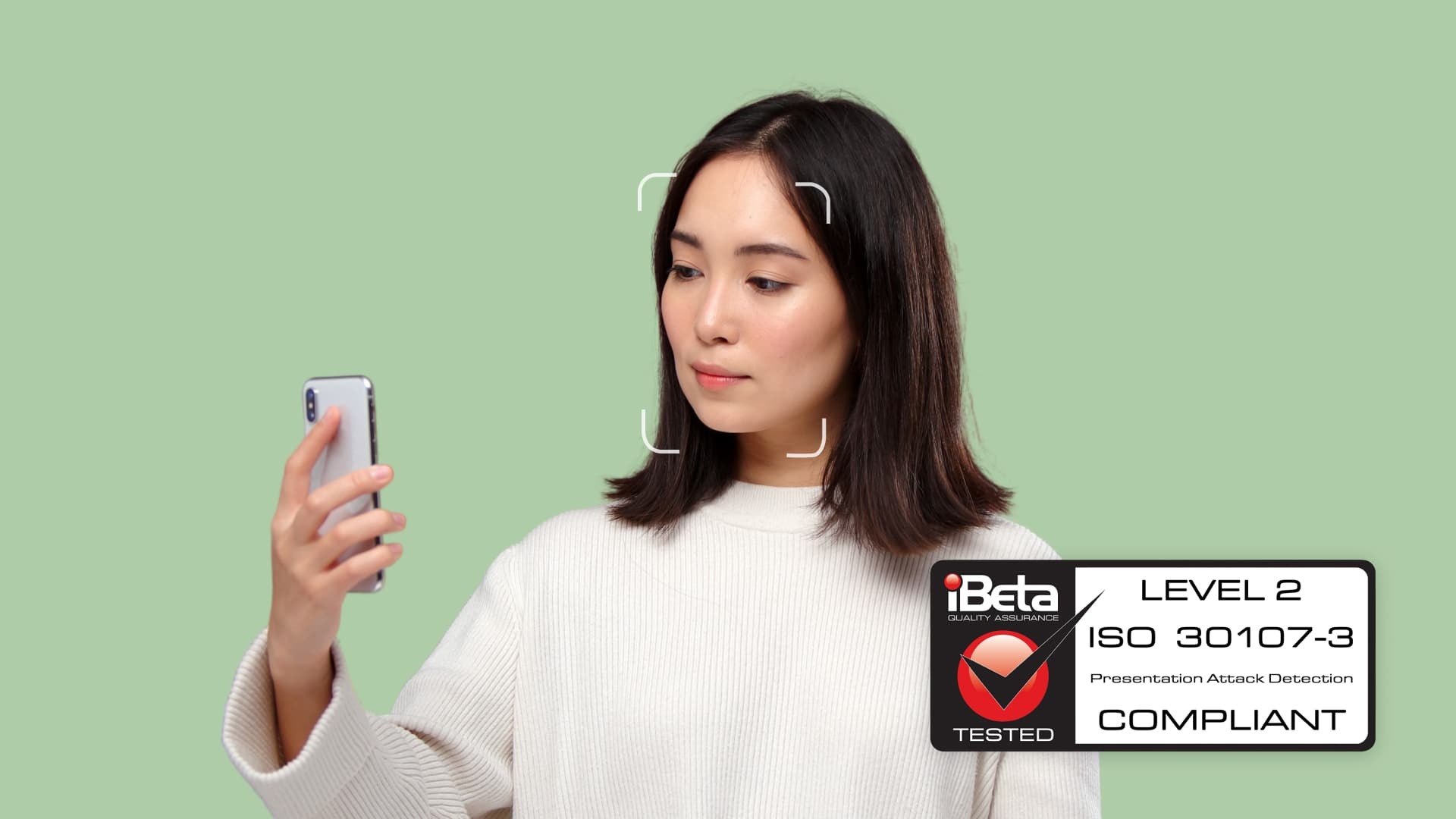Authentication
Yoti MyFace liveness white paper
Learn how Yoti’s liveness solution can help you defeat spoof attacks Liveness is an essential part of any verification or authentication process. It gives you reassurance that you are dealing with a real human. Read our latest white paper on liveness to learn how Yoti’s MyFace liveness solution can help defeat presentation attacks including: Paper image Mask Screen image Video imagery Deep fake video Injection attacks Bot attacks Key takeaways from the report Yoti’s MyFace solution is NIST Level 2 approved with 100% attack detection. Why liveness is important for verification and authentication. The difference between active and
Yoti achieves iBeta NIST Level 2 for proprietary passive liveness technology, MyFace
MyFace has been awarded iBeta NIST Level 2 with 100% attack detection rate Yoti’s passive liveness technology can be used to strengthen age checks, prevent account takeover and protect against identity fraud MyFace white paper outlines performance and bias 2nd March 2023, London, UK – Digital identity company Yoti has announced its proprietary passive liveness technology, MyFace, is now compliant with iBeta ISO PAD Level 2. The technology achieved a 100% attack detection rate. MyFace verifies that a user is a real person, and not a presentation attack such as a printed or digital photo, video or mask –
How Yoti can help combat digital injection attacks
As use of online verification grows, there inevitably follows increasing temptation for bad actors to develop ways to exploit the process. As a provider of verification services we must show businesses, regulators and governments that we have robust anti-spoofing technology, checks and processes. An emerging but rapidly growing threat for verification services are digital injection attacks. What are injection attacks? Injection attacks are a form of attack on remote verification services. Direct attacks are the most common attempt to spoof systems. Examples of direct attacks are: Paper image 2D and 3D masks Screen image Video imagery Direct attacks are
NIST approval explained
Many companies in the identity space talk of NIST certification. What does this mean for you as a user of identity services and what does it mean for your customers? Who is NIST? NIST is the National Institute of Standards and Technology (NIST), a non-regulatory agency of the United States Department of Commerce. NIST’s remit is to create and certify measures, standards and technology to enhance trade and productivity. Formed in 1901, their remit is to provide standards and certification for businesses. At first this included clocks and thermometers, all kinds of ‘weights and measures’. But over time



